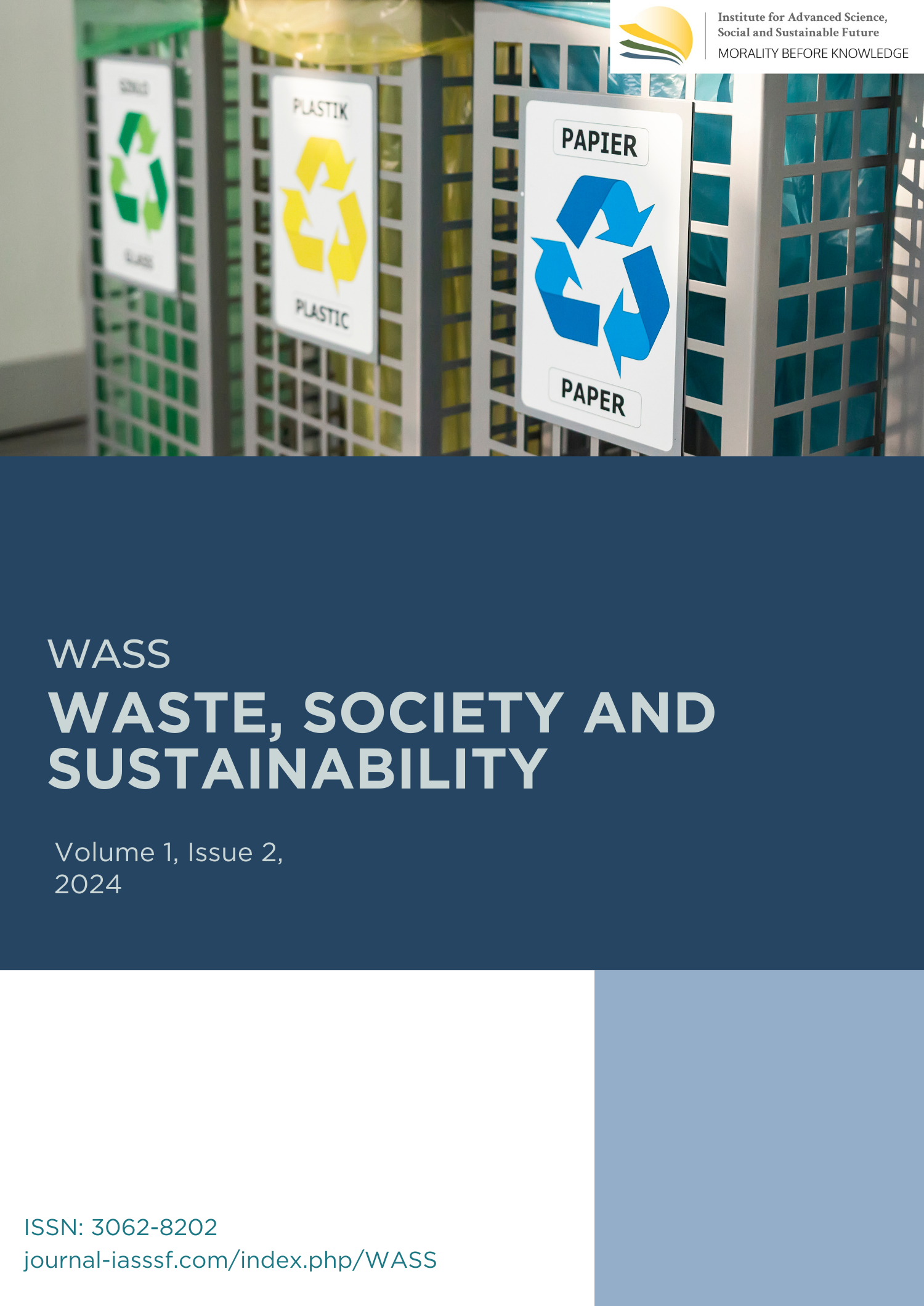Analysis of solid waste risk areas in Cimahi City using the 2018 district/city sanitation strategy guidelines
DOI:
https://doi.org/10.61511/wass.v1i2.2024.982Keywords:
solid waste risk assessment, village-level risk mapping, west java waste managementAbstract
Introduction: Cimahi City is one of the cities in West Java facing solid waste problems, such as the limited implementation of waste sorting activities, the limited number of transfer stations, the indiscriminate waste disposal on river, open burning of solid waste, etc. In overcoming these various waste problems and achieving the target of 30% waste reduction determined by the National Strategic Policy, an instrument is needed to analyze risk areas based on the level of risk of solid waste per village in Cimahi City. Method: These risk areas are depicted in the form of maps by referring to the 2018 District/City Sanitation Strategy Guidelines. Risk areas are assessed through a score of 1 until 4 for very low, low, high and very high risks. The score is obtained by multiplying the Impact parameters and Exposure parameters. Findings: The results of this study indicate that there are three villages with very high risk of solid waste, namely Village Cibeureum, Setiamanah, and Padasuka and one village with high risk of solid waste, namely Village Melong. The addition of the number of treatment units was recommended in several villages so that changes in the score of risk areas occurred. Conclusion: Cimahi City is dealing with serious solid waste issues, and to tackle them effectively (especially to meet the national goal of reducing waste by 30%), it's crucial to identify which areas are at the highest risk. The study highlights where the biggest problems are and gives a practical solution—add more treatment facilities to manage waste better and reduce risk. Novelty/Originality of this article: The novelty of this research lies in its spatially-targeted risk assessment approach to solid waste management at the village level in Cimahi City, which is rarely addressed in existing studies on urban waste issues in Indonesia.
References
Azhar, J. (2015). Penilaian Risiko Kesehatan Lingkungan di Dusun Kokoa Desa Marannu Kecamatan Lau Kabupaten Maros Tahun 2015. UIN Alauddin.
Cimahi City Central Bureau of Statistics. (2018). Kecamatan Cimahi Selatan Dalam Angka 2018. Central Bureau of Statistics.
Cimahi City Central Bureau of Statistics. (2018). Kecamatan Cimahi Tengah Dalam Angka 2018. Central Bureau of Statistics.
Cimahi City Central Bureau of Statistics. (2018). Kecamatan Cimahi Utara Dalam Angka 2018. Central Bureau of Statistics.
Government Regulation of the Republic of Indonesia Number 41 of 2007 concerning Regional Government Agency.
Haryanto, A. (2018). Aliran sungai di Cimahi dipenuhi sampah. SindoNews.
Hikmat, R. R., & Juwana, I. (2019). Pollution load of Cisangkan River: The domestic sector. IOP Publishing.
Juwana, I., & Albar, M. S. (2019). The improvement of solid waste management in Cibodas Botanical Garden through environmental economic valuation using the travel cost method. E3S Web of Conferences, 76. EDP Sciences.
Juwana, I., Muttil, N., & Perera, B. J. C. (2014). Application of West Java Water Sustainability Index to Citarum Catchment in West Java. Water Science and Technology: Water Supply, 14(6), 1150-1159. https://doi.org/10.2166/ws.2014.075
Kusnuri. (2007). Konsep dan Aplikasi Sistem Pendukung Keputusan. Andi.
Ministry of Education and Culture of the Republic of Indonesia. (2016). Kamus Besar Bahasa Indonesia (KBBI). Ministry of Education and Culture of the Republic of Indonesia.
Ministry of Environment and Forestry Republic of Indonesia. (2019). Buku II Laporan Utama Dokumen Informasi Kinerja Lingkungan Hidup Daerah Kota Cimahi Tahun 2019. Ministry of Environment and Forestry Republic of Indonesia.
Ministry of Health of the Republic of Indonesia. (2014). Panduan Praktis Pelaksanaan EHRA (Environmental Health Risk Assessment/Penilaian Risiko Kesehatan Lingkungan). Ministry of Health of the Republic of Indonesia.
Ministry of Public Works and Public Housing of the Republic of Indonesia. (2018). Pedoman Penyusunan Strategi Sanitasi Kabupaten/Kota Tahun 2018. Ministry of Public Works and Public Housing of the Republic of Indonesia.
Presidential Regulation of the Republic of Indonesia Number 97 of 2017 concerning National Policies and Strategies for Household Waste Management and Household Waste.
Pranaditya, M., & Juwana, I. (2019). Re-development of a city-scale waste bank assessment index: Case studies Bandung and Cimahi Cities. IOP Conference Series: Earth and Environmental Science, 277(1), 012029. IOP Publishing. https://doi.org/ 10.1088/1755-1315/277/1/012013
Farida, A., & Juwana, I. (2016). Uncertainty and sensitivity analysis of West Java Water Sustainability Index - A case study on Citarum Catchment in Indonesia. Ecological Indicators, 61, 170-178. https://doi.org/10.1016/j.ecolind.2015.08.034
Downloads
Published
Issue
Section
Citation Check
License
Copyright (c) 2024 Indah Fionita, Iwan Juwana

This work is licensed under a Creative Commons Attribution 4.0 International License.














